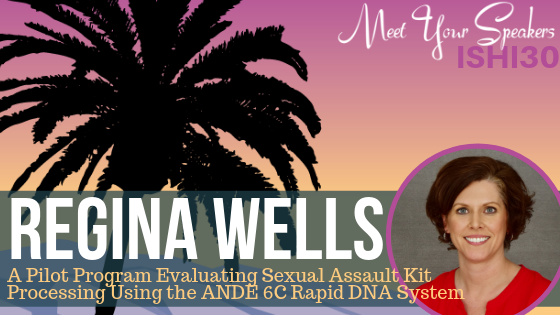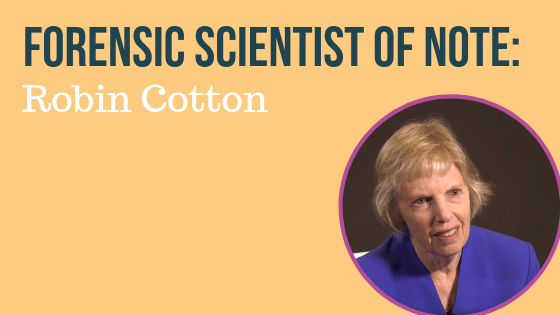Under the Microscope – Brittney Chilton

In her presentation at ISHI, Brittney Chilton (Criminalist II at the Washoe County Sheriff’s Office Forensic Science Division) will share the story of Washoe County employee, Chris Long. In 2014, Chris was diagnosed with AML/MDS Leukemia. He underwent a stem cell/bone marrow transplant and volunteered to participate in a case study led by the Washoe […]
Under the Microscope – Regina Wells

Laboratories across the country are dealing with backlogs of sexual assault kits waiting to be tested. Laws in many states have changed requiring all kits to be tested, increasing the caseload for laboratories as well as the turnaround time in which results are obtained. The ANDE 6C Rapid DNA System can analyze an evidence sample […]
Under the Microscope – Lisa Mertz

Within the past 15-20 years, successful technological advances in forensic science have solved many cold cases. The increase in the number of possible items that might presently be tested as evidence in criminal matters, in general, has led to the need for collaborative efforts among the New York City DNA Laboratory, the New York City […]
Under the Microscope – Charlotte Word

In the early days of DNA profiling, Restriction Fragment Length Polymorphism (RFLP) testing required a relatively large amount of DNA for the development of a DNA profile, and the bloodstain left behind was still visible or detectable using presumptive testing. By the late 1990s, Polymerase Chain Reaction (PCR) testing had replaced RFLP, and the amount […]
Under the Microscope – Kevin Cheng

Reproducibility is one of the main principles of the scientific method. Reproducibility in forensic DNA interpretation typically relates to the reported match statistic. The development of probabilistic genotyping (PG) solutions using semi-continuous and continuous models was partly in a response to intra and inter laboratory differences to improve reproducibility of the results. However, there are still […]
Under the Microscope – Jodie Ward

The Australian Facility for Taphonomic Experimental Research (AFTER) is the only human decomposition facility in the Southern Hemisphere. In April 2019, the Australia New Zealand Policing Advisory Agency DVI Committee (ADVIC) conducted a two-day national DVI exercise at AFTER involving 50 participants representing every police jurisdiction in Australia and New Zealand, the Australian Defence Force, specialist forensic […]
Forensic Scientist of Note: Robin Cotton

It was Alec Jeffrey’s paper on RFLP analysis that proved the catalyst for Robin Cotton to alter her career path from research on the Y chromosome to the applied science of DNA typing. A biochemist by training, Cotton had a PhD in molecular biology and biochemistry from UC Irvine and two post-docs under her […]
Clearing the Sexual Assault Backlog in Murdertown, USA

Clearing the sexual assault backlog in the US has become a top priority over the past couple of years, because each rape kit that sits on a shelf untested represents a victim whose case has not yet been investigated. In Flint, Michigan, the backlog stood at 1,047 untested kits when Jen Janetsky became an […]
Entry-Level Coaching Inspires a Winning Culture

The first three years of a young forensic scientist’s career matter greatly. More personal and professional transformation occurs during this time than perhaps any other. It sets the tone for the scientist’s life in the laboratory by establishing attitudes that will either expand or deflate her/his potential to be a high performer. Whenever […]

